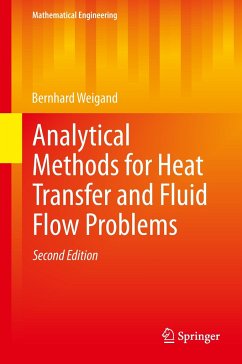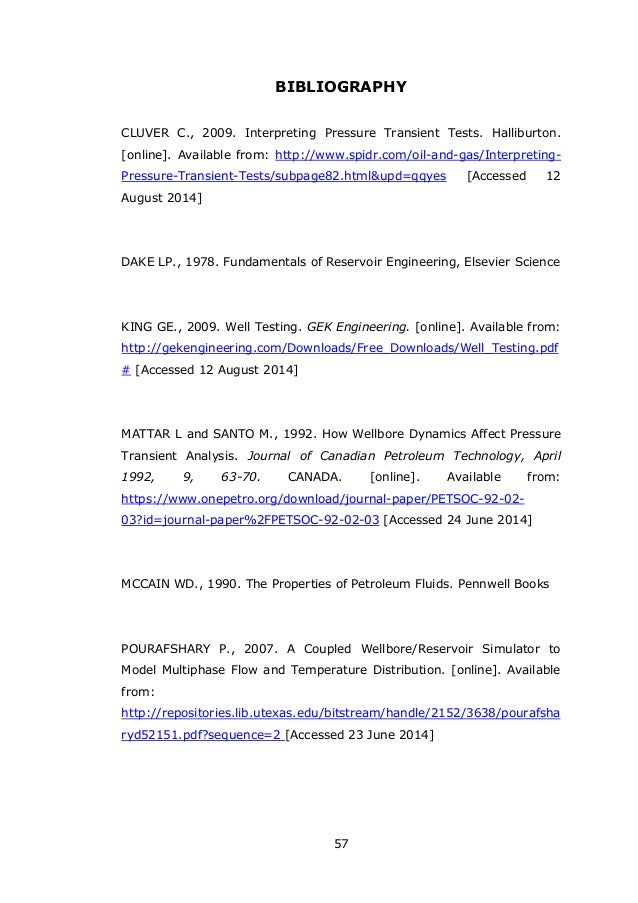Editor: Butterworth-Heinemann
ISBN: 0080983510
Size: 11,44 MB
Format: PDF, Docs
Read: 553
- Fluid Flow And Heat Transfer In A Mixing Elbow
- Computational Fluid Flow And Heat Transfer
- Fluid Flow And Heat Transfer Journal
Wellbore heat-transfer modeling and applications. Dissipative particle dynamics simulation of biomagnetic fluid flow and heat transfer. Since heat conduction in the rock matrix is much slower than convective heat transfer associated with fluid flow along. DownloadFluid flow and heat transfer in wellbores pdf. May 30, 2017 Using CO2 as a heat transmission fluid to. This depression has a high geothermal gradient and heat flow. 2015 SPE Distinguished Members. His book Fluid Flow and Heat Transfer in Wellbores is used as a graduate text in. C.S.: “Fluid and Heat Transfers in Wellbores. Systematic modeling of heat transfer in wellbores. Current work plan is to develop heat transfer. Fluid Flow/Heat Transfer 1. And Kabir, C.S. 2012: “Wellbore Heat-transfer Modeling and Application.” Invited review paper, J. 86-86 127-136.
 Heat exchangers with minichannel and microchannel flow passages are becoming increasingly popular due to their ability to remove large heat fluxes under single-phase and two-phase applications. Heat Transfer and Fluid Flow in Minichannels and Microchannels methodically covers gas, liquid, and electrokinetic flows, as well as flow boiling and condensation, in minichannel and microchannel applications. Examining biomedical applications as well, the book is an ideal reference for anyone involved in the design processes of microchannel flow passages in a heat exchanger. Each chapter is accompanied by a real-life case study New edition of the first book that solely deals with heat and fluid flow in minichannels and microchannels Presents findings that are directly useful to designers; researchers can use the information in developing new models or identifying research needs
Heat exchangers with minichannel and microchannel flow passages are becoming increasingly popular due to their ability to remove large heat fluxes under single-phase and two-phase applications. Heat Transfer and Fluid Flow in Minichannels and Microchannels methodically covers gas, liquid, and electrokinetic flows, as well as flow boiling and condensation, in minichannel and microchannel applications. Examining biomedical applications as well, the book is an ideal reference for anyone involved in the design processes of microchannel flow passages in a heat exchanger. Each chapter is accompanied by a real-life case study New edition of the first book that solely deals with heat and fluid flow in minichannels and microchannels Presents findings that are directly useful to designers; researchers can use the information in developing new models or identifying research needsFluid Flow Heat Transfer And Boiling In Micro Channels
Editor: Springer Science & Business Media
ISBN: 3540787550
Size: 10,23 MB
Format: PDF, Kindle
Read: 938
The subject of the book is uid dynamics and heat transfer in micro-channels. This problem is important for understanding the complex phenomena associated with single- and two-phase ows in heated micro-channels. The challenge posed by high heat uxes in electronic chips makes thermal management a key factor in the development of these systems. Cooling of mic- electronic components by new cooling technologies, as well as improvement of the existing ones, is becoming a necessity as the power dissipation levels of integrated circuits increases and their sizes decrease. Miniature heat sinks with liquid ows in silicon wafers could signi cantly improve the performance and reliability of se- conductor devices. The improvements are made by increasing the effective thermal conductivity, by reducing the temperature gradient across the wafer, by reducing the maximum wafer temperature, and also by reducing the number and intensity of localized hot spots. A possible way to enhance heat transfer in systems with high power density is to change the phase in the micro-channels embedded in the device. This has motivated a number of theoretical and experimental investigations covering various aspects of heat transfer in micro-channel heat sinks with phase change. The ow and heat transfer in heated micro-channels are accompanied by a n- ber of thermohydrodynamic processes, such as liquid heating and vaporization, bo- ing, formation of two-phase mixtures with a very complicated inner structure, etc., which affect signi cantly the hydrodynamic and thermal characteristics of the co- ing systems.
Editor: Springer
ISBN: 3319096478
Size: 16,10 MB
Format: PDF, Docs
Read: 109
The main aim of this book is to introduce and give an overview of a novel, easy, and highly effective heat transfer augmentation technique for single-phase micro/minichannel heat sink. The specific objectives of the volume are to: Introduce a novel planar oblique fin microchannel and cylindrical oblique fin minichannel heat sink design using passive heat transfer enhancement techniques Investigate the thermal transport in both planar and cylindrical oblique fin structures through numerical simulation and systematic experimental studies. Evaluate the feasibility of employing the proposed solution in cooling non-uniform heat fluxes and hotspot suppression Conduct the similarity analysis and parametric study to obtain empirical correlations to evaluate the total heat transfer rate of the oblique fin heat sink Investigate the flow mechanism and optimize the dimensions of cylindrical oblique fin heat sink Investigate the influence of edge effect on flow and temperature uniformity in these oblique fin channels.
Next Generation Microchannel Heat Exchangers
Editor: Springer Science & Business Media
ISBN: 1461407796
Size: 19,35 MB
Format: PDF, ePub, Mobi
Read: 385

In Next Generation Microchannel Heat Exchangers, the authors’ focus on the new generation highly efficient heat exchangers and presentation of novel data and technical expertise not available in the open literature. Next generation micro channels offer record high heat transfer coefficients with pressure drops much less than conventional micro channel heat exchangers. These inherent features promise fast penetration into many mew markets, including high heat flux cooling of electronics, waste heat recovery and energy efficiency enhancement applications, alternative energy systems, as well as applications in mass exchangers and chemical reactor systems. The combination of up to the minute research findings and technical know-how make this book very timely as the search for high performance heat and mass exchangers that can cut costs in materials consumption intensifies.
Editor: John Wiley & Sons
ISBN: 3527675051
Size: 11,23 MB
Format: PDF, ePub, Mobi
Read: 791
This edition of 'Micro Process Engineering' was originally published in the successful series 'Advanced Micro & Nanosystems'. Authors from leading industrial players and research institutions present a concise and didactical introduction to Micro Process Engineering, the combination of microtechnology and process engineering into a most promising and powerful tool for revolutionizing chemical processes and industrial mass production of bulk materials, fine chemicals, pharmaceuticals and many other products. The book takes the readers from the fundamentals of engineering methods, transport processes, and fluid dynamics to device conception, simulation and modelling, control interfaces and issues of modularity and compatibility. Fabrication strategies and techniques are examined next, focused on the fabrication of suitable microcomponents from various materials such as metals, polymers, silicon, ceramics and glass. The book concludes with actual applications and operational aspects of micro process systems, giving broad coverage to industrial efforts in America, Europe and Asia as well as laboratory equipment and education.
Microchannels And Minichannels Icmm2004
Editor: Amer Society of Mechanical
ISBN:
Size: 20,83 MB
Format: PDF, ePub, Docs
Read: 277
Editor: Amer Society of Mechanical
ISBN:
Size: 17,46 MB
Format: PDF, ePub, Docs
Read: 462
Fluid Flow And Heat Transfer In A Mixing Elbow
Heat Pipes And Solid Sorption Transformations
Editor: CRC Press
ISBN: 1466564156
Size: 20,73 MB
Format: PDF, ePub, Docs
Read: 902
Developing clean energy and utilizing waste energy has become increasingly vital. Research targeting the advancement of thermally powered adsorption cooling technologies has progressed in the past few decades, and the awareness of fuel cells and thermally activated (heat pipe heat exchangers) adsorption systems using natural refrigerants and/or alternatives to hydrofluorocarbon-based refrigerants is becoming ever more important. Heat Pipes and Solid Sorption Transformations: Fundamentals and Practical Applications concentrates on state-of-the-art adsorption research and technologies for relevant applications based on the use of efficient heat transfer devices—heat pipe and two-phase thermosyphons—with the objectives of energy efficiency and sustainability. This book also discusses heat pipe thermal control as it relates to spacecraft applications. The first few chapters of Heat Pipes and Solid Sorption Transformations: Fundamentals and Practical Applications focus on heating and cooling, the principles of adsorption, adsorption dynamics, and the availability of three-phase boundaries. Other chapters cover successful heat pipe applications and heat-pipe-based thermal control of fuel cells, solid sorption transformers, and electronic components and air-condition devices. The final chapters summarize the achievements in the field of heat and mass transfer study in heat pipes with variable properties such as gas loaded heat pipes. Several configurations of thermosyphons are showcased, with suggested applications. A number of examples of equipment using the thermosyphon technology are presented and, in the final chapter, the concept of flow boiling and flow condensation heat transfer in micochannels is analyzed in detail.
Editor: CRC Press
ISBN: 1420007114
Size: 15,20 MB
Format: PDF, ePub, Docs
Read: 990
Computational Fluid Flow And Heat Transfer
Through analyses, experimental results, and worked-out numerical examples, Microscale and Nanoscale Heat Transfer: Fundamentals and Engineering Applications explores the methods and observations of thermophysical phenomena in size-affected domains. Compiling the most relevant findings from the literature, along with results from their own re
Fluid Flow And Heat Transfer Journal
Two Phase Flow Boiling And Condensation
Editor: Cambridge University Press
ISBN: 1139468901
Size: 19,23 MB
Format: PDF, ePub, Docs
Read: 220
This text is an introduction to gas-liquid two-phase flow, boiling and condensation for graduate students, professionals, and researchers in mechanical, nuclear, and chemical engineering. The book provides a balanced coverage of two-phase flow and phase change fundamentals, well-established art and science dealing with conventional systems, and the rapidly developing areas of microchannel flow and heat transfer. It is based on the author's more than 15 years of teaching experience. Instructors teaching multiphase flow have had to rely on a multitude of books and reference materials. This book remedies that problem by covering all the topics essential for a graduate course. Important areas include: two-phase flow model conservation equations and their numerical solution; condensation with and without noncondensables; and two-phase flow, boiling, and condensation in mini and microchannels.